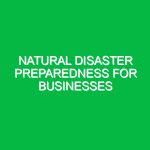In a world where emergencies can strike without warning, understanding and mastering first aid, particularly CPR (Cardiopulmonary Resuscitation) and AED (Automated External Defibrillator) training, is invaluable. These life-saving techniques form a crucial part of Health, Safety, and Environment (HSE) protocols, equipping individuals with the skills needed to respond effectively during medical crises. This article will delve into the significance of first aid: CPR and AED training, explore potential hazards associated with these skills, outline safety precautions, and highlight relevant regulations.
Understanding First Aid: CPR and AED Training
At its core, first aid encompasses the immediate care provided to someone experiencing a medical emergency. Within this broad framework, CPR and AED training specifically address life-threatening situations involving cardiac arrest. CPR involves a combination of chest compressions and rescue breaths to maintain blood flow and oxygenation until professional help arrives. Conversely, an AED is a portable device that analyzes heart rhythms and delivers an electric shock to restore a normal rhythm when necessary.
The relevance of first aid: CPR and AED training in the HSE realm cannot be overstated. In workplaces, schools, and public areas, having trained personnel can mean the difference between life and death. For instance, a sudden cardiac event at a construction site could lead to a worker’s collapse, creating an urgent need for immediate intervention. Knowing how to perform CPR and use an AED effectively enhances the safety and preparedness of any environment.
Identifying Hazards and Risks in First Aid: CPR and AED Training
Like any skill, first aid: CPR and AED training comes with its unique set of hazards and risks. Understanding these can significantly enhance the effectiveness of training programs and the preparedness of individuals. Here are several key considerations:
Physical Hazards
When performing CPR, rescuers often find themselves in physically demanding situations. For example, if a rescuer is administering CPR on a person lying on a hard surface, they may risk injuring their back or shoulders due to the force required for effective compressions. Additionally, the rescuer may face hazards such as bloodborne pathogens if the victim has visible injuries or bodily fluids. Proper training can mitigate these risks through techniques that promote body mechanics and the use of personal protective equipment (PPE).
Psychological Risks
Responding to a medical emergency can be psychologically taxing. Witnessing a cardiac arrest can induce stress and anxiety, potentially impairing a rescuer’s ability to perform effectively. Such situations may trigger trauma, especially if a rescuer has previously encountered traumatic events. Training programs should include components that address the emotional aspects of emergency response, emphasizing the importance of mental preparedness and self-care.
Environmental Hazards
Environmental conditions can pose significant challenges during a first aid response. For instance, administering CPR in a crowded or noisy environment might hinder communication and distract the rescuer from focusing on the task at hand. Weather conditions, such as rain or extreme heat, can also create unsafe situations for both the rescuer and the victim. Training should encompass strategies for assessing and adapting to varying environments, ensuring effective responses regardless of the circumstances.
Safety Precautions and Best Practices for First Aid: CPR and AED Training
Equipping oneself with knowledge is only part of the equation; implementing safety precautions is equally essential in first aid: CPR and AED training. Here are some best practices:
Use of Personal Protective Equipment (PPE)
When responding to an emergency, it is crucial to prioritize safety. The use of gloves, masks, and eye protection can minimize exposure to infectious materials. For instance, in a scenario where a person has sustained an open wound, a rescuer wearing gloves can perform necessary interventions without direct contact with bodily fluids.
Follow the Chain of Survival
The Chain of Survival is a concept that outlines critical steps to improve survival rates in cardiac emergencies. This includes recognizing the emergency, calling for help, performing CPR, and using an AED. Familiarity with this chain can enhance a rescuer’s effectiveness. For example, during a training exercise, participants can practice recognizing signs of cardiac arrest and initiating the chain promptly, reinforcing the importance of timely intervention.
Stay Calm and Focused
One of the most critical aspects of any emergency response is maintaining composure. Panic can lead to mistakes, so training should emphasize techniques for staying calm under pressure. Role-playing scenarios can help trainees practice managing their emotions while performing CPR or operating an AED. For instance, a hypothetical scenario where a team member collapses during a meeting can serve as a practical exercise in maintaining focus amidst chaos.
Regulations and Standards Governing First Aid: CPR and AED Training
Understanding the regulatory landscape surrounding first aid: CPR and AED training is essential for compliance and effectiveness. Several organizations set standards and guidelines that govern training and certification:
American Heart Association (AHA)
The AHA provides comprehensive guidelines for CPR and AED training. Their courses are widely recognized and emphasize the latest scientific research on resuscitation techniques. The AHA recommends regular training updates to ensure that individuals remain proficient in their skills.
Occupational Safety and Health Administration (OSHA)
OSHA mandates that certain workplaces have trained first aid responders on-site. The regulations vary by industry but generally require training that includes CPR and AED use. Compliance with OSHA standards not only promotes safety but also protects organizations from potential liabilities.
International Red Cross
The International Red Cross offers extensive training programs that focus on first aid, CPR, and AED use. Their guidelines are recognized globally, promoting standardized practices that enhance emergency response capabilities across diverse settings.
Conclusion: The Lifesaving Impact of First Aid: CPR and AED Training
In conclusion, first aid: CPR and AED training is an essential component of Health, Safety, and Environment protocols. By understanding the hazards associated with these skills, implementing safety precautions, and adhering to regulatory standards, individuals and organizations can significantly enhance their preparedness for medical emergencies. The knowledge gained through training not only empowers individuals but also fosters a culture of safety and responsiveness within communities. As we’ve seen through various scenarios, having the ability to perform CPR and utilize an AED can mean the difference between life and death. Investing in this training is not just beneficial; it is vital. Whether in a workplace, a school, or at home, being equipped with first aid skills can save lives and provide peace of mind.


